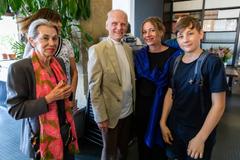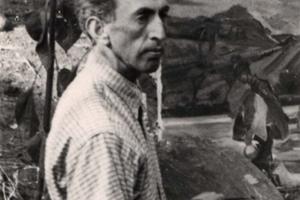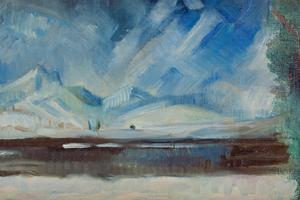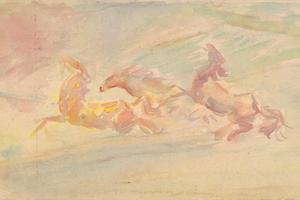Expressionist Arnold Peter Weisz-Kubínčan kept his paintings, drawings and sketchbooks in a suitcase to protect them from the Nazi’s fury. He did not survive, but the suitcase did.
The artist’s friend Zorka Kahan-Ring took the suitcase with her as the only permitted baggage when emigrating to America. The works of this forgotten artist returned to Slovakia 70 years later in this very suitcase.
“I’m very happy that the suitcase has come home,” said Katarina Curtis, daughter of Zorka Kahan-Ring, with an emotional voice. It was she who, three years ago, contacted the Slovak National Gallery (SNG) with an offer of returning the suitcase. “I knew that this would warm the heart of my mother, who always considered herself its caretaker.”
Exhibition Artist’s (Heavy) Luggage
Takes place until November 10
Located on the third floor of Esterházy Palace, the SNG, Ľ. Štúr Square
the SNG is open Tue-Wed 10:00-18:00, Thur: 12:00-20:00, Fri-Sun: 10:00-18:00
free entrance
Today, the suitcase, displayed in a place of honour on the third floor of Esterházy Palace, is opening the Artist’s (Heavy) Luggage exhibition. It tells not only the fascinating life story of the artist, but also presents the oeuvre of this little-known interwar expressionist of European importance.
“This suitcase is a symbol of the journey that every baggage embodies, as well as the identity Weisz-Kubínčan bore and which, as a typical central European, was complicated,” said one of the exhibition’s curators, Lucia G. Stach. He was born in Prussia, of Jewish origin and experienced two world wars. But even baptism did not protect him from being transported to a concentration camp and perishing in the Holocaust.
Life marred by war

Arnold Peter Weisz-Kubínčan (1898 – 1945) was born as Arnold Weisz in a Jewish family in the Prussian town of Usch, today’s Ujście in Poland. At the turn of the century, the family moved to the Kingdom of Hungary, Dolný Kubín, nowadays in Slovakia. From 1913 to 1917 he studied sculpture at the School of Applied Arts in Budapest. After WWI he continued his studies in Berlin, probably at a private academy. Here, as he himself said, “he soaked up everything that was inspiring”, especially the tradition and vigour of German Expressionism, which corresponded with his personality. On these foundations, Weisz-Kubínčan built his original painting concept.



 Arnold Peter Weisz-Kubínčan. Hall of names. Yad Vashem, Jeruzalem (source: Yad Vashem, Jeruzalem )
Arnold Peter Weisz-Kubínčan. Hall of names. Yad Vashem, Jeruzalem (source: Yad Vashem, Jeruzalem )
 Katarina Curtis (left) with her husband and curator Lucia G. Stach. (source: Juraj Starovecký, SNG)
Katarina Curtis (left) with her husband and curator Lucia G. Stach. (source: Juraj Starovecký, SNG)


